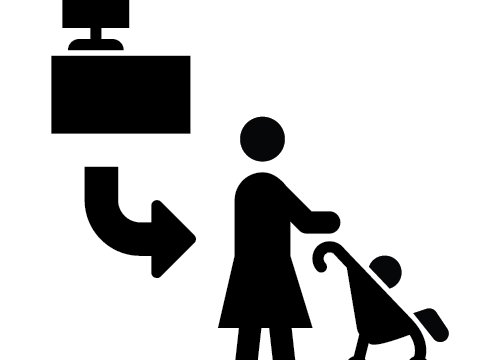Maternity Leave Rights in Pakistan
Pakistan has four laws that cover maternity related issues:
1. The Mines Maternity Benefits Act, 1981
2. The West Pakistan Maternity Benefit Ordinance, 1958
3. The Provincial Employees Social Security Ordinance, 1965
4. The Civil Servants Act, 1973 (Revised Leave Rules, 1980)
Aside from the above mentioned laws, the Constitution, under its Article 37, also requires the state to make sure employed women receive their maternity benefits.
According to the Mines Maternity Benefits Act, 1981 and The West Pakistan Maternity Benefit Ordinance, 1958, every employed woman is entitled to a maximum of 12 weeks of fully paid maternity leave. She can take this leave six weeks before the delivery and six weeks after the delivery. A woman on maternity leave will be paid at the rate equal to her last paid wages.
However, the eligibility conditions for the two laws are different. Under the Mines Maternity Benefits Act, 1981, a woman must be employed in the mine for a period of not less than six months (at least six months) preceding the date of her delivery. Meanwhile, the The West Pakistan Maternity Benefits Ordinance, 1958, requires that in order to claim the benefit, a woman must be employed for a period of not less than four months preceding the day she delivers the child. According to these two laws, no woman can be employed by the employer knowingly of her situation during the six weeks following the delivery of her child.
An employer’s liability, to pay maternity benefits, is not dismissed even when an entitled woman worker dies the day she delivers a child or during the period of pregnancy. The due amount has to be paid to her nominated persons or legal representatives.
Furthermore, under both the above mentioned laws, no woman is to be employed (by the employer knowingly of her situation) during the six weeks after the delivery of her child.
Women are also eligible for maternity benefit under the Provincial Employees Social Security Ordinance, 1965, if contributions were paid to the social security institution in your respect for at least six months in the preceding 12 months.
In addition, according to the Revised Leave Rules 1980, a female civil servant is eligible for 90 days leave (almost 13 weeks) maternity leave on full wages.
How can a women inform her employer of her expected delivery and notify after delivery?
A woman worker who is entitled to maternity benefit may give notice orally or in writing to the management that she expects to deliver a child within one and a half months and after receiving this notice, the management is supposed to provide leave of absence from the next day. A woman can also take a 12-week leave starting from just before the delivery of her child.
A woman who has delivered a child has to give notice of delivery to her organization within seven days of her delivery. She is also required to submit proof of the delivery to the management within six months of delivery. This proof can either be in the form of a certified copy of birth register of a hospital, certificate issued by a medical practitioner or any proof acceptable to her employer.
Eligibility for medical care during pregnancy:
Under the Provincial Employees Social Security Ordinance, 1965, a woman is entitled to pre-natal confinement and postnatal medical care. However, it requires that in the last six months, contributions were paid in the woman’s respect for at least 90 days.
According to the The West Pakistan Maternity Benefit Ordinance, 1958, a woman can receive payments in the following ways:
1. Receive cash payment for the first six weeks before delivery (when she takes leave) and the remaining amount for other six weeks has to be paid on production of proof of delivery and within forty-eight hours of its production
2. After the delivery and proof production, a woman will receive the payment for the first six week within forty-eight hours and the remaining amount will be paid within six weeks.
3. After the production of proof that a woman has delivered a child, all maternity benefits can be paid within forty-eight days.
Frequency of maternity leaves:
The laws governing the private sector, Mines Maternity Benefits Act, 1981 and The West Pakistan Maternity Benefits Ordinance, 1958 do not place any limits on the number of times a woman takes maternity leave.
In the public sector, a female servant is not allowed to take maternity leave more than three times in her entire career except for those females employed in the vacation department. If a female civil servant takes leave after the third time, she will have to cover the leave on her own expense.
*Following the 18th Amendment to the Constitution of Pakistan, The West Pakistan Maternity Benefits Ordinance, 1958, which serves to protect the rights of working women, was repealed as a federal law and was to be re-enacted as a provincial law. Yet, the law has not been incorporated in any of the provincial governments.
NOTE: While all the other provinces adopted the 1958 lapsed Ordinance, Khyber Pakhtunkhwa enacted its own law called the Khyber Pakhtunkhwa Maternity Benefits Act 2013 available at this link: http://kp.gov.pk/uploads/2016/02/8._Maternity_Benefits_Act,_2013_.pdf
The views expressed in this article are those of the author and do not necessarily represent the views of CourtingTheLaw.com or any organization with which she might be associated.


